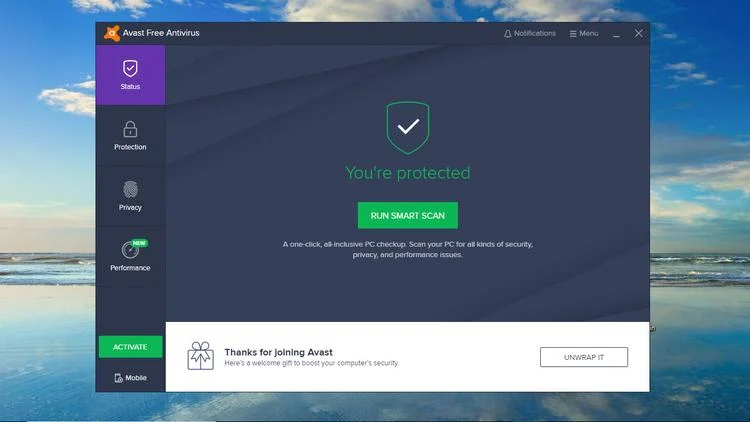To know how to install an antivirus on a pc or laptop it is essential to keep us safe from all the threats that abound on the internet. Even, we are also going to need essential security software for our PC and that is not an antivirus.
Does Windows have a built-in antivirus?
Windows 10 includes Windows Defender which, by default, should protect us from malicious software. It is an excellent option if we only want a basic antivirus that perfectly fulfills its purpose.
Additionally, since it is integrated with the operating system, it hardly consumes resources, so it can be an ideal option for those computers with little hardware power.
The only problem is that it’s not very feature-rich and can’t quite match the top security programs, although it does offer an incredibly good level of protection; we can find better alternatives on the internet.
What antivirus should I use for my computer?
We have two types of antivirus: paid and free. Even many of the major security brands, such as Kaspersky, Bitdefender, or Avast, include a free version with limited features. In this case, its free and paid versions share the same core antivirus engine, which means they offer the same level of protection.
This means that it will be enough to protect us from viruses, Trojans, malicious files, etc. Although the big difference is found in the additional functions, such as warnings from websites that can harm our computer, spyware, etc.
Many paid versions bring very interesting and useful advanced features, especially in these times. As advanced protection of our webcam and microphone, warnings of scams in social networks, password manager, safes where we can store important data which will not be compromised if we are victims of ransomware.
In this way, we can choose to try the free version, which is generally for 30 days and if it convinces us we can purchase the complete program. However, If we are not convinced to pay for the full version, in this case I would choose to uninstall it and leave only the one that comes by default in Windows (Defender).
How to install an antivirus on a Windows PC or laptop
Installing an antivirus on a Windows PC or laptop is no different than what we do when installing a program or application. In this case, the first thing we will have to do is check if we have another antivirus installed (in addition to Windows Defender).
To do this, we are going to have to open the Settings app (Windows + i) then we are going to go to Applications and we will review the list of installed apps. We need to have a single antivirus installed to avoid problems and conflicts. Having two antivirus the only thing that will do is that neither of them fulfills its function.
This is independent of Windows Defender, when we install an antivirus from another company, Windows Defenders is automatically disabled, so we won’t have to worry about this application.
Once we have this clear, we are simply going to choose which antivirus we will use and download the executable file from its official website. It is highly recommended to avoid alternative sites when it comes to antivirus.
When we have the file downloaded, we are going to double click on it. In the example that we will see a little further down, we are going to use Avast, but it is very similar with all of them.

Next, we will see a window that will notify us that the software will make changes to the system; this is something quite common in the process. So we are simply going to give “Accept” and then “Install”.

Before we begin, we’ll need to check if there are any checkboxes on the Reason? screen. When it comes to free versions, it sometimes gives us the option to install additional software from partners or permissions to share our data with advertisers. This is not a bad thing, although it is not something we really need either; so we are going to have to be sure of what we are agreeing to install on our computer before proceeding.
After the program has finished installing, we are usually asked a few questions about updating other related products. We don’t need to accept or anything, we can skip it.
Run a scan for viruses or malware

The last step will be to run a full scan so that the antivirus can verify that we do not currently have any malicious programs.
After the malware scan finishes running, which may take a while, that’s it. We recommend taking some time to investigate all the options and functions that the software offers. It would be important to check the automatic scans part to save us this hassle in the future.


